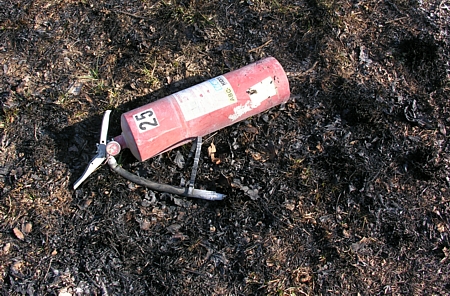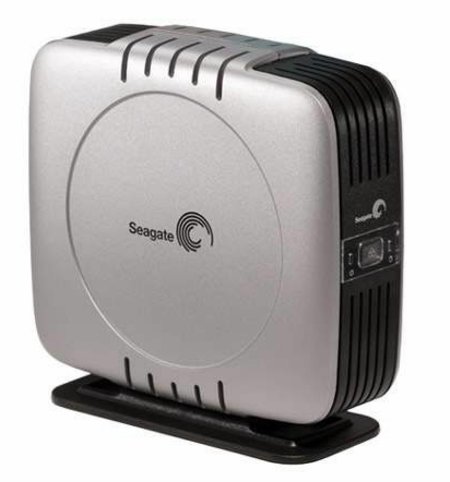For those who might not know, we have been experiencing a rash a fires in the area over the past several years. The most recent (up until yesterday) was about two weeks ago (post of previous fire here). Yesterday, in the early afternoon, I again noticed smoke, but this time about a quarter mile to the east of us. I immediately phoned a neighbor whose new log home was in the direct path of the fire, just to make sure she was aware that the flames were headed in her direction.
 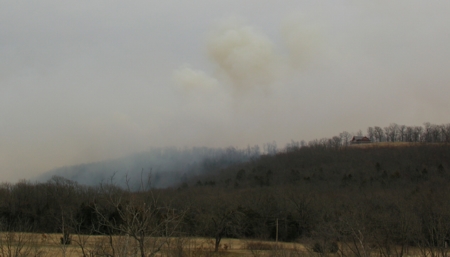
Not only was she aware of the fire, she had reported it to the authorities, along with the information that she had seen the fire being set by an individual in a white pickup truck.
Knowing that the VFD was on the scene, and seeing that the wind would not push the fire in our direction was comforting, but I empathized with the anguish my neighbor must have been going through. A short while later we received a telephone call from our neighbor, who informed us that she had just seen someone in the same white pickup truck igniting fires along our road and on our property. I jumped in my truck and headed down our road, hoping to catch sight of the perpetrator. He was nowhere to be found, but the evidence of his visit remained – fires set in many places on our property. I quickly returned to the house and asked Retta to call 911, while I grabbed my steel-tined rake and headed back to the newly set fires. The arsonist had set fires on both sides of our road, one side being pasture, the other wooded.
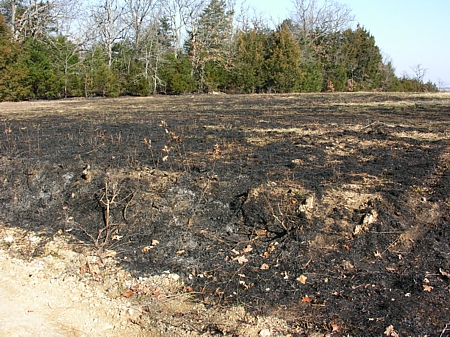
It was apparent I could not put out the wooded portion alone, so I set to the task of containing the pasture fire. I was soon joined by a member of the Lead Hill VFD, who had come to assess the situation. Because the Lead Hill equipment had been dispatched to fight the original fire, we struggled to contain the grass fire, while we waited for personnel and equipment from the Bergman VFD (a neighboring community about 15 miles away). Soon, the Bergman VFD arrived and began battling the blazes burning in the woods, along a fire lane I had built last year. Before long, the Lead Hill VFD had a pumper truck available that they stationed near our house and structures, which is quite reassuring.
 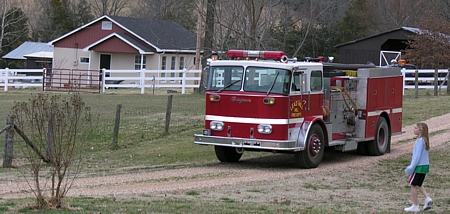
The Arkansas Forestry Commission (AFC) office in Marion County, which has usually responded to fires on our land, had already been dispatched to deal with the original fire to the east of us, which now looked like this:
 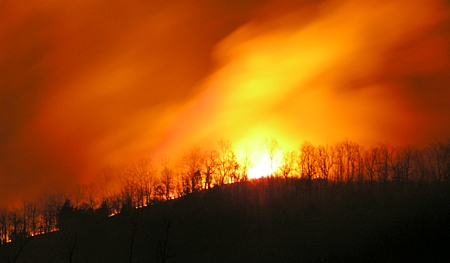
So the AFC office in neighboring Boone County sent men and a bulldozer over to assist us. The fire that had been burning in our woodlands had been set in many places along both sides of an existing fire lane that the AFC built for me last year.
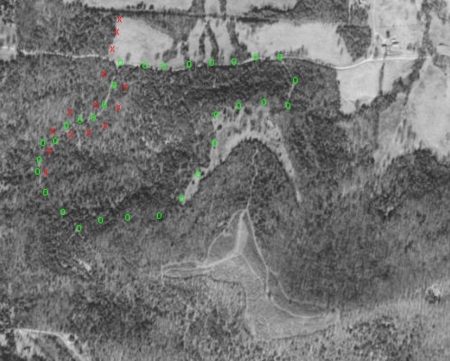
In the aerial photo, the red x’s denote the approximate locations of the blazes. The green o’s represent the boundary of a 37 acre controlled burn that the AFC was scheduled to conduct for us this spring. Rather than trying to extinguish what was burning, the AFC ranger suggested we just take this opportunity, since men and equipment were already on scene, to backfire the entire 37 acres. That sounded fine to me, so off to work they went, setting a portion of our woods ablaze.
Meanwhile, our neighbors to the east stood vigil while the Marion County AFC and Lead Hill VFD (perhaps assisted by the Peel VFD, I’m not sure) built lines around the blaze threatening them. It is once again with relief that I can say that no one was injured and no structures were lost. All of the personnel involved in these fires did an outstanding job.  Our heartfelt thanks to all of you, for the selfless way you give of yourselves to your neighbors and community. It is much appreciated!
This morning, George, Gracie and I took a walk to assess the outcome of the burning. There are still areas where downed logs continue to burn.
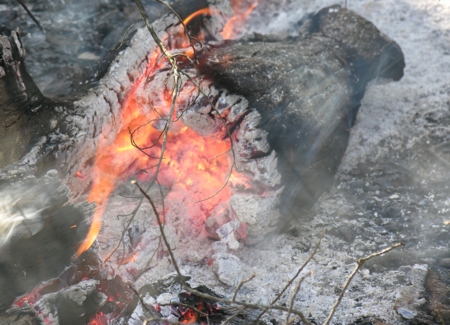
There are also areas of incomplete burning, such as the downed wood in this cedar glade.
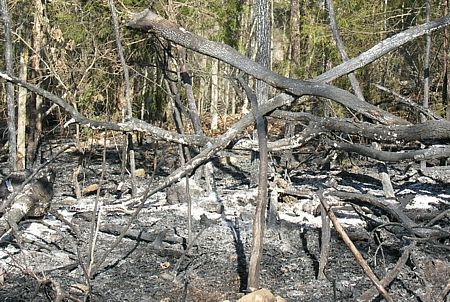
The large oak tree, which lightning had downed and which blocked a fire lane, is now history. The remnants of it’s trunk stands to the right in this next photo:

I wonder what Gracie thinks about all of the fires that keep burning up her playground?
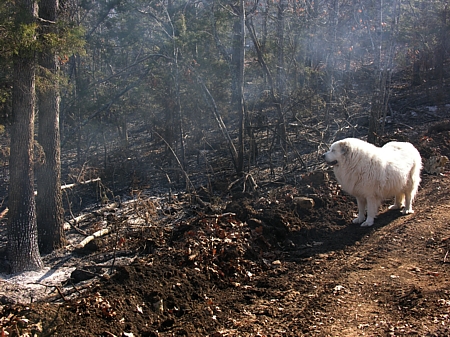
I have absolutely no idea what story underlies this remnant of the firefighting. Anyone care to speculate?
